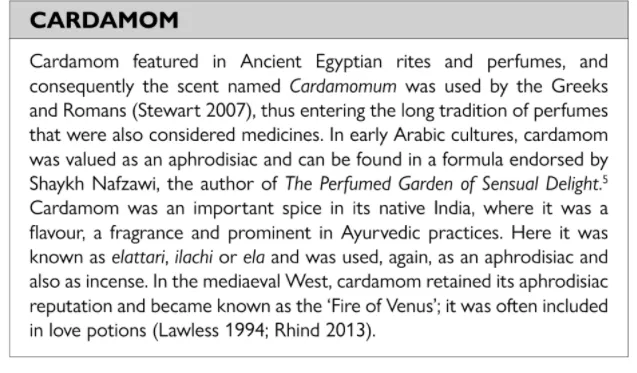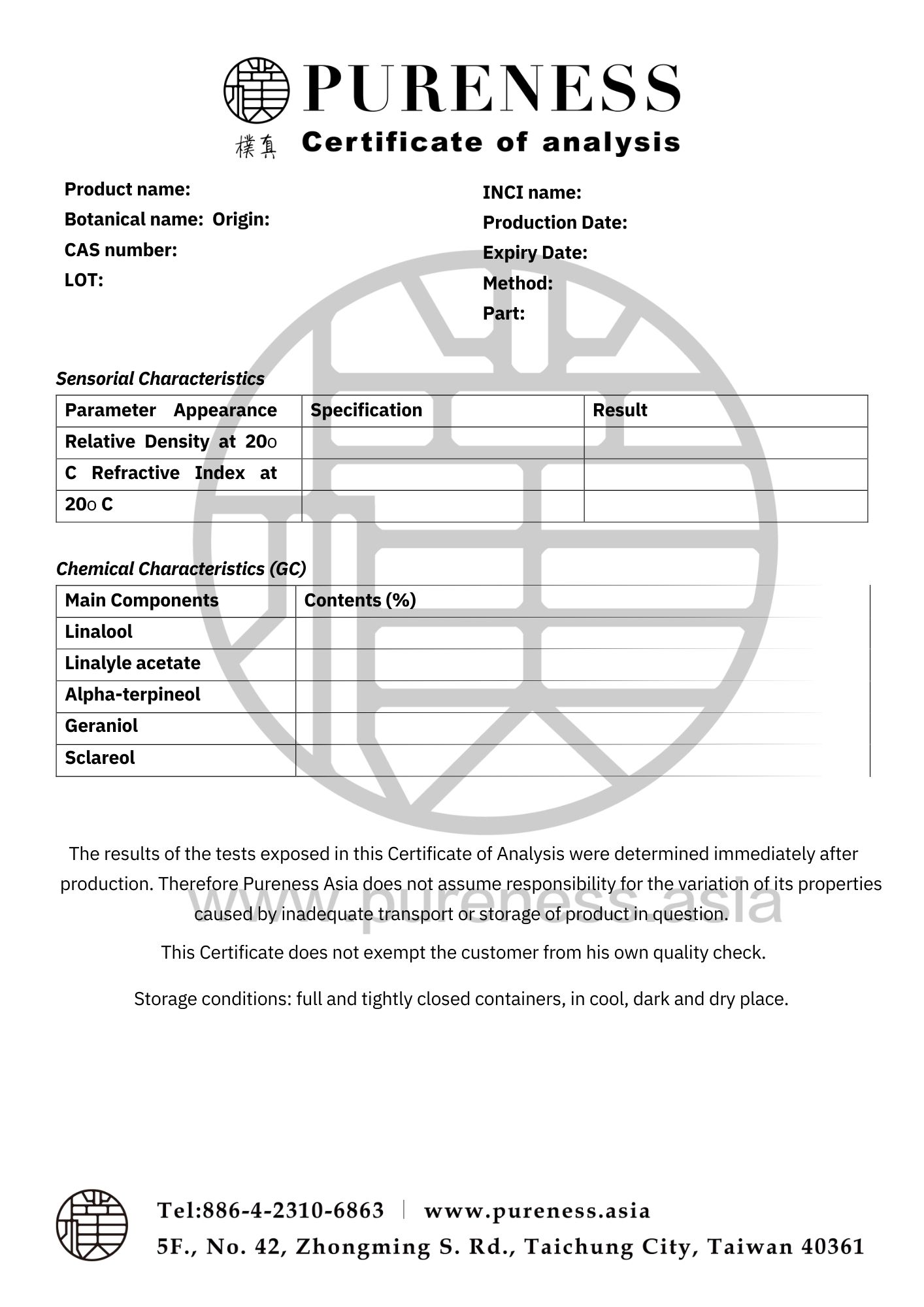
Cardamom
Scientific name|Elletteria Cardamomum
Origin|India
Classification|Spices series
Specifications|500g-25kg Please contact sales for details
Extraction part|Seed
Extraction method | Distillation
Plant family|Zingiberaceae
Aroma|Warm, rich, with hints of lemon and spice, and a slight bitterness
▎Essential Oil Introduction
Cardamom (Elettaria cardamomum) is a perennial herb that can reach heights of 2 to 3 meters. It is mostly wild but also cultivated in India and Sri Lanka. The plant features long, green, soft, blade-like leaves. Its small flowers are yellow with violet tips, and the fruits are pale green, containing reddish-brown, oval seeds. The fleshy rhizome resembles ginger.
Known as the "queen of spices" or "paradise grain" in India, Europe, and the Middle East, cardamom has been valued as a high-quality spice since ancient times. The ancient Greeks and Romans prized it highly, and the ancient Egyptians used it for incense. For thousands of years, it has held significant status in Arab culture and Eastern medicine and is listed in one of the famous ancient Egyptian pharmacopoeias. It was cultivated as early as the 7th century BC by Babylonian kings.
Cardamom, like other aromatic plants such as orange blossom, is believed to enhance the bond between partners, though its effects are not as strong as those of some other plants and typically require the use of additional spices. In the Middle Ages, cardamom was referred to as "Venus's Fire," considered a love elixir of the time. In Tibet, it has been used as a remedy for anxiety.
Cardamom essential oil can be extracted from fresh fruits using either steam distillation or supercritical CO2 extraction methods. India is a major producer of cardamom essential oil, and its extraction and use can be traced back to the 16th century, often used in floral-scented perfumes. Cardamom essential oil ranges from colorless to pale yellow and is primarily composed of 1.8-cineole and terpinyl acetate when extracted by steam distillation.
▎Component Analysis
|Main component: Oxides
The main components of cardamom essential oil include 1.8-cineole (which has mucolytic properties), terpinyl acetate, sedanol, limonene, and other constituents such as borneol.
|Research Validation

▸ Researchers like Frank and Powell believe that cardamom essential oil's properties, such as its ability to stimulate, reduce muscle spasms, relieve mucosal inflammation, and act as an expectorant, are likely due to its high content of 1.8-cineole
|Raw Material Certifications
To obtain relevant certification information, please contact us on WhatsApp.
▎References
- Emira Noumi, Mejdi, Snoussi, Mousa M. Alreshidi, Punchappady-Devasya Rekha, Kanekar Saptami, Lucia Caputo, Laura De Martino, Lucéia Fatima Souza, Kamel Msaada, Emilia Mancini, Guido Flamini, Abdulbasit Alzosie 和 Vinceel Msaada, Emilia Mancini, Guido Flamini, Abdulbasit Alzosie 和 Vinceel Msaada . Chemical and biological evaluation of essential oils from cardamom species. Molecules, October 2018; 23: 1-18.
- Abdullah, Ali Asghar, Masood Sadiq Butt, Muhammad hahid, Qingrong Huang, Evaluating the antimicrobial potential of green cardamom essential oil focusing quorum sensing inhibition of Chromobacterium violaceum Technology。 -2315
- F. Nadiya, N. Anjali, Jinu Thomas, A. Gangaprasad and KK Sabu, Transcriptome profiling of Elettaria cardamomum (L.) Maton (small cardamom). Genomics data, 2017; 11: 102-103.
- Poonam Khatri, JS Rana, Pragati Jamdagni and Anil Sindhu. Phytochemical screening, GC-MS and FT-IR analysis of methanolic extracts leaves of Elettaria cardamomum. International Journal of Research Granthaalayah, 2017.
- Md Mizanur Rahman, Mohammad Nazmul Alam, Anayt Ulla, Farzana Akther Sumi, Nusrat Subhan, Trisha Khan, Bishwajit Sikder, Hemayet Hossain, Hasan Mahmud Reza and Mdbesraful Alam. Cardamom powder suman, powvent, 分析, 分析, 分析, 分析, 系統stress in liver of high carbohydrate high fat diet induced obese rats. Lipids in Health and Disease, 2017; 16: 151, 1-12.
- Neeta Bhagat and Archana Chaturvedi. Spices as an alternative therapy for cancer treatment. Systematic Reviews in Pharmacy, 2016; 7(1): 46-56.
- Ebru Kuyumcu Savan and F. Zehra Küçükbay. Essential oil composition of Elettaria cardamomum Maton. Journal of Applied Biological Sciences, 2013; 7(3): 42-45.
- Snoussi Mejdi, Noumi Emira, Dehmani Ameni, Flamini Guido, Aouni Mahjoub, Al-sieni Madiha and Al-sieni Abdulbasit. Chemical composition and antimicrobial activities of Elettaria cardamomum L. (Manton) essential oilst wivities of food borne and medically important bacteria and fungi. Journal of chemical, biological and physical sciences, 2016; 6(1): 248-259.
- Asma Saeed, Bushra Sultana, Farooq Anwar, Muhammad Mushtaq, Khalid M. Alkharfy and Anwarul-Hassan Gilani. Antioxidant and antimutagenic potential of seeds and pods of green cardamom (Elettaria cardamomumum). ): 461-469.
- Biplab Bhattacharjee and Jhinuk Chatterjee。 2013; 14: 3735 – 3742.
- Keezheveettil Parukutty Amma Padmakumari Amma, Maheshwari Priya Rani, Indu Sasidharan and Venugopalan Nair Premakumari Nisha. Chemical composition, flavonoid-phenolic contents and radical scavenging activity of four majorr. 3): 20-24
|Some images sourced from the internet. Contact for copyright removal|





